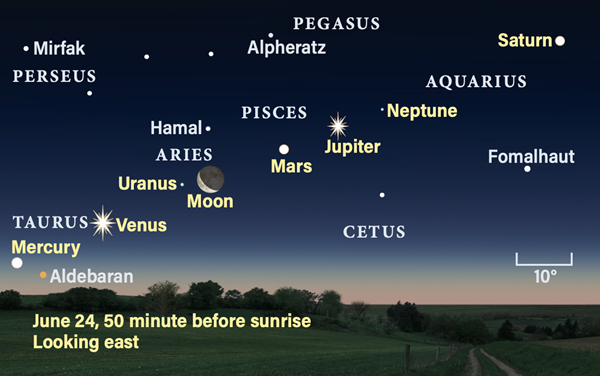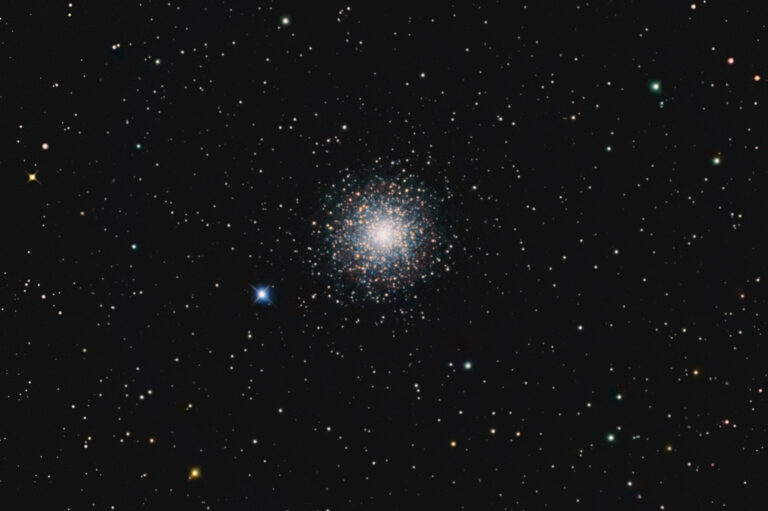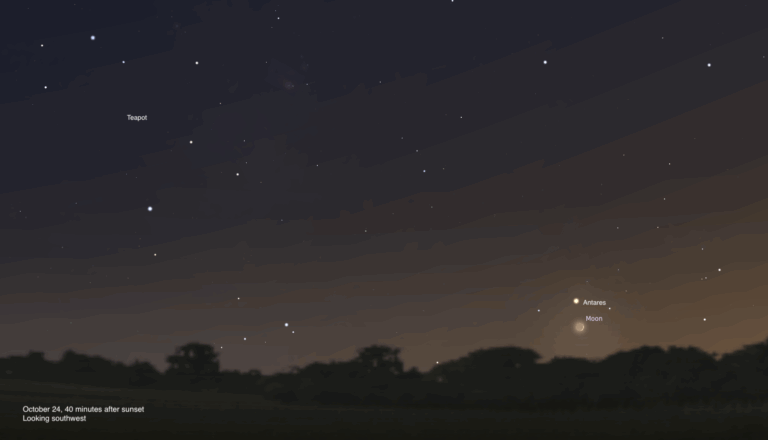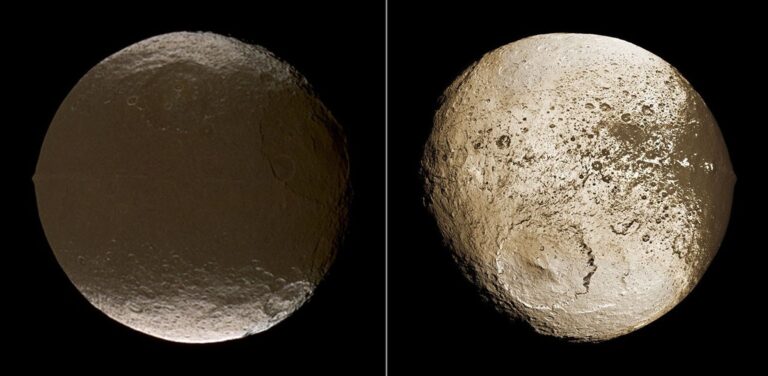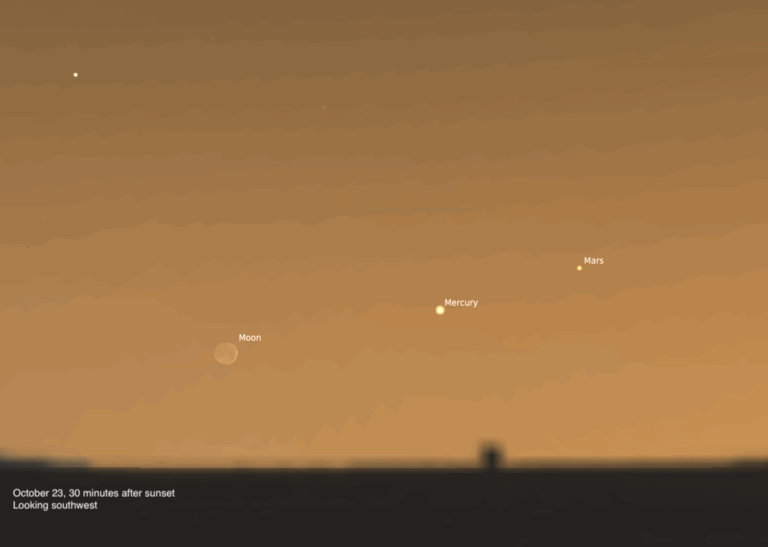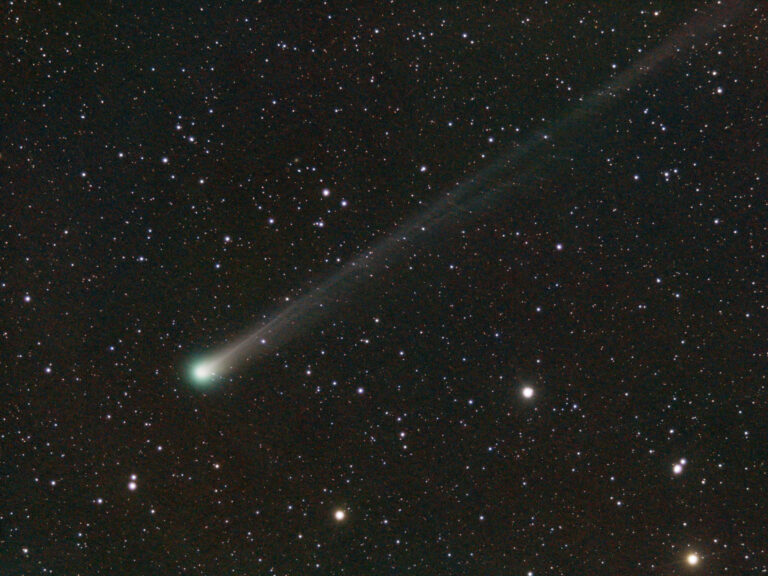Key Takeaways:
This month, the morning sky has been chock-full of planets — a rare sight in and of itself. But on Friday morning, there’s something extra-special going on before dawn: Every single naked-eye planet, plus our Moon, is lined up in the east in order of distance from the Sun. It’s an easy-to-enjoy planetary parade you won’t want to miss, stretching some 106° along the ecliptic (the plane of our solar system, along which the planets orbit).
Plus, that’s not all: In addition to the five “classical” planets — Mercury through Saturn — Uranus and Neptune are also in line. The more distant ice giants, though, require binoculars to see their dimmer disks, and they’re bucking the trend by standing out of order as well. Nonetheless, their presence means every single major planet circling the Sun is in the sky at once this morning, offering a unique and awe-inspiring view across the solar system.
The lineup
By about 50 minutes before sunrise, the entire tableau is on display. We’ll go from east to west through the lineup. Mercury, which was last to rise, is now about 3.7° above the horizon. It glows at magnitude –0.1, some 3.5° northeast of Aldebaran, the eye of Taurus the Bull. That star’s reddish-orange light may just be visible in the brightening sky.
Next comes Venus, 10° west of Mercury. Earth’s sister planet is a blazing morning star at magnitude –3.9, hanging about 6° southeast (directly below) the Pleiades star cluster (M45). The glittering stars will likely be quickly lost in twilight, but since Venus rises earlier than Mercury (around 3:30 A.M. local time), you can step outside under a darker sky if you want to see the pairing.
Some 20° west of Venus is delicate crescent Moon, now a little less than 20 percent lit. It’s located in Aries the Ram. Another 19.5° west of the Moon is magnitude 0.5 Mars, swimming among the stars of Pisces. Track 15.5° farther west of the Red Planet to land on bright Jupiter, the second brightest of the lot at magnitude –2.4. All four of the gas giant’s Galilean moons are on display for observers with a telescope this morning: From east to west they are Callisto, Ganymede, Europa, and Io. The first three sit east of the planet; Io sits to Jupiter’s west. Additionally, the famous Great Red Spot is visible on the planet’s broad face this morning, moving from east to west. It sits roughly in the middle of the disk just after 3 A.M. EDT.
First to rise and last in our tour is magnitude 0.5 Saturn, 42° west of Jupiter. The ringed planet, which looks stunning through any telescope, is 35° high in the constellation Capricornus roughly an hour before sunrise. It sits just less than 2° northeast of the magnitude 2.9 star Deneb Algedi, though this fainter luminary will fade quickly in twilight. But again, since Saturn rises quite early (before midnight, in fact), you can opt to get up just a bit earlier to catch it in a dark sky for the best views.
Ice giants included
If you’ve got binoculars or a telescope, you can also catch a glimpse this morning of the two most distant planets in our solar system. Neptune, glowing at magnitude 7.8, sits between Jupiter and Saturn, some 11.5° west of Jupiter, located in western Pisces. And Uranus’ dim, tiny disk is in Aries the Ram, located between Venus and the Moon. It’s some 6° east of our satellite this morning before dawn.
Catching all seven planets in the morning sky happens relatively infrequently, and the last time such a lineup occurred was in 2004. Plus, you won’t get a similar view again until 2041. With all the bright planets and the Moon in the right spot today, this is an event you won’t want to miss — even if you have to get up a bit early to enjoy the sight!
Sunrise: 5:32 A.M.
Moonrise: 2:35 A.M.
Moon Phase: Waning crescent (19%)
*Times for sunrise and moonrise are given in local time from 40° N 90° W. The Moon’s illumination is given at 4:00 A.M. local time from the same location.

